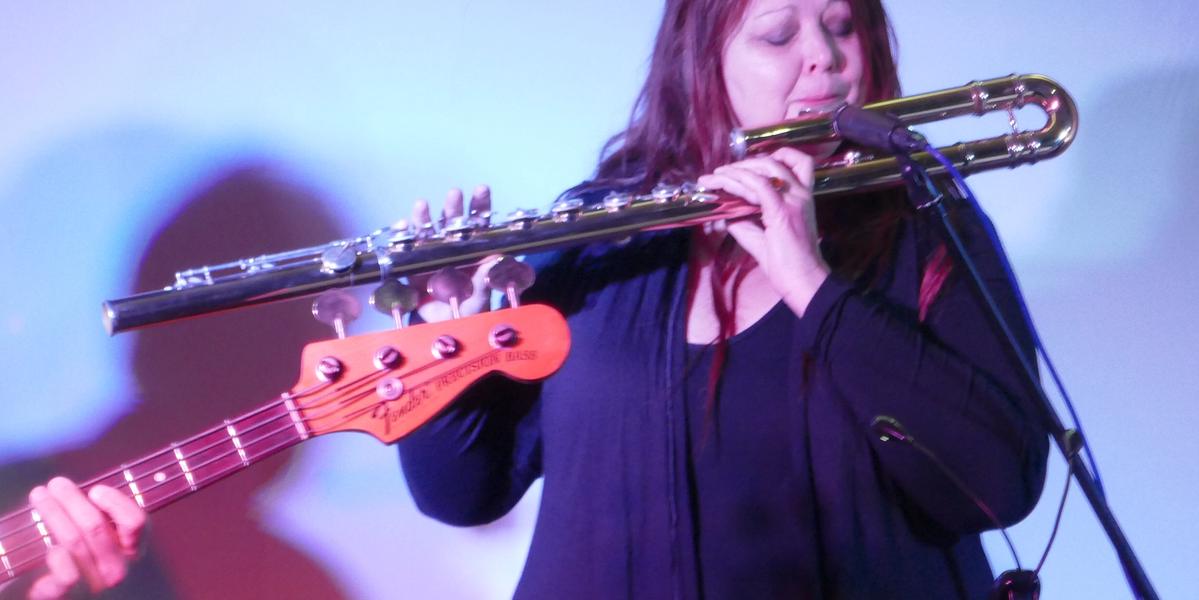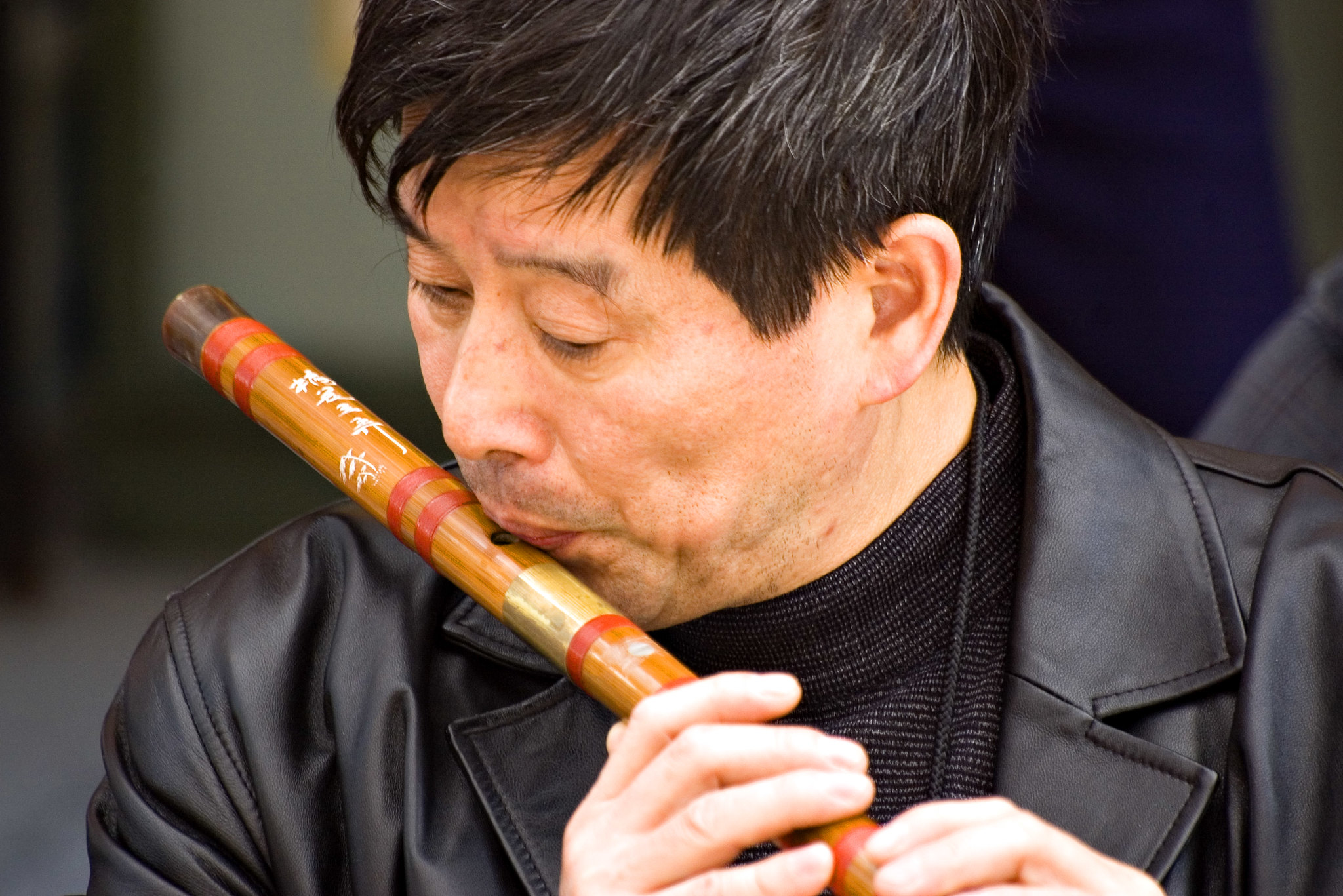The bass flute is a member of the flute family, which include the piccolo and C flute, the most commonly played, as well as the alto flute and many others. Feel free to check out our overview article on the flute family for more information.
For now, we are going to focus on the bass flute. Because, you know, it's all about the bass...
What Makes It Unique?
The bass flute is a member of the flute family, and as such, the techniques used to play it are analogous to the standard flute, making it accessible to the average flutist. However, as with any instrument, there are nuances that require the performer to adjust to the needs of the instrument.
Of the primary, or most common, members of the flute family, the bass flute is the first one that must be played with a curved headjoint and is one of the lowest members that can still be played while standing. Yes, there are models of the alto flute that have a curved headjoint, but the curved is standard on the bass flute.
Range
Of course, the most unique factor of the bass flute is its range. The bass flute sounds an octave lower than the standard C Flute.

As you can see from the image above, the bass flute is written on the staff like any other flute. For the most part, fingerings for the different notes on the staff remain the same or similar between instruments, but when played, the pitch on the bass flute is an octave lower than it is written.
Tone and Techniques
This instrument has a warm and sultry sound to it. It does not project well, especially in the lower octaves, and as such is why you find this instrument more often in chamber and solo settings than in any large ensemble.
As with many of the larger flutes, it also can have a very ethereal quality and can also produce some hauntingly breathy tones.
The resonance of the instrument allows for percussive key clicks and slaps to be very effective, as well as tongue rams and other strong percussive articulations.
But since this is a flute, and the mechanics are designed similarly to the C flute, this instrument can achieve the same speed of notes as a C flute.
Where Are They?
The rise in popularity of the bass flute is almost parallel to the rise in popularity of the flute choir. The core of flute ensembles consists of Concert C Flutes, Alto Flutes, and Bass Flutes. A piccolo or two is often added for color and more modern compositions are starting to branch out into lower flutes.
But that all being said, many flutists are introduced to the instrument through participation in these ensembles, as the need to have a bass flute for solo or orchestral repertoire is rare (unless, that is, if you wanted to play bass flute specific repertoire).
Most major flute makers have a bass flute model. Pearl, Gemeinhardt, Yamaha, Altus, and Jupiter, some of the more common brand names, all have a model or several. These models range from $3500 to $10,000.
There is a lot experimentation in the low flute world. Eva Kingma Bass Flutes have both an open hole model and an upright model, a trend in low flutes to help save on the shoulder strain of holding the heavier instruments.
What Music Do They Play?
As mentioned before, the bass flute is seen in a variety of circumstances. As with all members of the flute family, it would be typical for someone to learn and study the standard C flute before branching off into other types of flutes.
The repertoire for the bass flute is vast in the skill needed to play it, and the ensemble setting it is written in.
Flute Choir
This instrument is a staple in modern flute choir music. These pieces are often composed by flutists and feature multiple members of the flute family.
Flute choir music runs the gamut of styles and genres, from arrangements of popular tunes and holiday songs to original suites with a symphonic flair. While the inclusion of a bass flute is not always part of the orchestration, it is more common than not, and the majority of flute choirs will have a couple of bass flutes that are loaned out to players.
Chamber Music
The bass flute as we know it today is only a bit over a century old, so as such, all original repertoire is fairly new in the grand scheme of the music world.
There are several composers who write for the bass flute. These are usually flutists themselves and have a passion for the instrument and its family. You also find several low flute specialist commissioning new works to help grow the repertoire.
Gary Schocker's Small Sonata for a Large Flute for Bass Flute and Piano is a great piece for the beginning bass flutists who wants to explore original music. (Note: by beginning bass flutists, I mean an experienced flutist who is starting to explore the bass flute.)
To explore a more ethereal tone for the instrument, you can take a listen or look at Karuna by Bill Douglas for Bass Flute and Piano.
There are also several pieces that ask the flutist to switch between flutes. Katherine Hoover's Two for Two features the flutist switching between alto and bass flute. And, as I've probably mentioned in previous articles, Bolling's Suite for Flute and Jazz Piano Trio has a movement that begins with a Bass Flute Solo.
Other Textures
So it is pretty unusual to see the bass flute in any large ensemble setting, and if it is, it is usually written in for a particular purpose or as part of a featured solo.
John Mackey's The Frozen Cathedral is a work for wind ensemble that features the bass flute in a couple of sections of the piece.
Fujikura's Flute Concerto, which premiered on December 11, 2015, was written for Claire Chase and the Nagoya Philharmonic Orchestra. In the five sections of the piece, the flutist switched between four seperate members of the flute family, Piccolo, C Flute, Contrabass, and Bass Flute.
You may hear the bass flute used in a Jazz context, as several woodwind doublers have taken up the instrument. Hubert Laws featured the bass flute on a recording of "Amazing Grace."
And do you remember Disney's The Jungle Book (the animated one, not the live action remake)? Composer George Burns' uses the Bass Flute throughout the score. Just listen at the 28 second mark of the overture to that film:
Conclusion
A bass flute may be just another flute for a flutist to enjoy so they can access a wider array of music. Maybe they have one to play in their local flute choir or are specializing in low flute music. While the repertoire seems narrow, it is an instrument full of color and possibilities that are ever-expanding.
While I won't go out and advocate that every flutist needs a bass flute, it is an instrument that is becoming increasingly popular for its tone and texture, and knowing where to find one in a pinch may be worthwhile.




